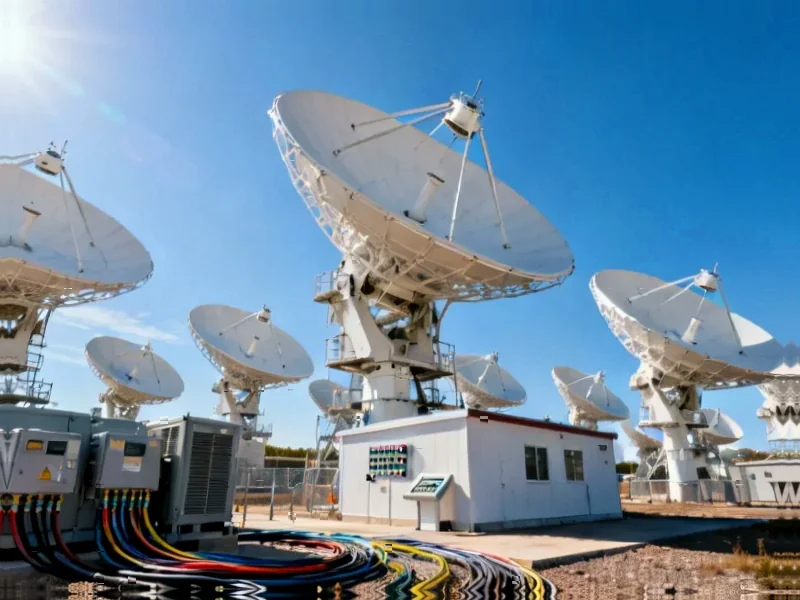According to Ars Technica, Vast’s Haven Demo mission launched into orbit Sunday from Cape Canaveral Space Force Station aboard a SpaceX Falcon 9 rocket as part of the Bandwagon 4 mission. The half-ton spacecraft successfully deployed its solar array and captured 4K video of the deployment, marking Vast’s transition to a “proven spacecraft company” according to CEO Max Haot. The company plans to launch its human-rated Haven-1 module no earlier than May 2026, followed by crew visits via SpaceX Dragon spacecraft for two-week stays. Haven-1 measures approximately 33 feet long and 14 feet wide with 1,600 cubic feet of habitable volume, and will undergo rigorous testing at NASA’s Neil Armstrong Test Facility before launch. This successful demonstration represents a crucial step toward Vast’s vision of establishing commercial space stations in low-Earth orbit.
The Iterative Advantage in Space Development
Vast’s approach represents a fundamental shift in how we build space infrastructure. Unlike traditional government-led programs that often pursue massive, fully-integrated systems from the outset, Vast is embracing an iterative development philosophy more commonly seen in Silicon Valley. By launching the Haven Demo first, they’re essentially conducting a minimum viable product test in orbit—validating core systems before committing to the much larger investment of a crew-rated module. This methodology significantly de-risks their program and allows for course corrections based on actual spaceflight data rather than simulations alone. The fact that they’re testing a subset of Haven-1’s propulsion system with identical thrusters, valves, and tanks shows they understand the value of proving individual components before scaling up.
The Emerging Commercial Space Station Ecosystem
Vast’s progress signals that we’re entering a new phase of commercial space development beyond just transportation. While SpaceX and others have revolutionized access to space, Vast represents the next logical step—creating destinations. The company’s stated roadmap from demo mission to single module (Haven-1) to multi-module station (Haven-2) mirrors how successful technology platforms typically evolve. What’s particularly interesting is how this creates a competitive landscape where multiple approaches can be tested simultaneously. Unlike the single-solution approach of the International Space Station era, we’re now seeing multiple companies pursuing different architectures, which will ultimately accelerate innovation through competition.
The Unseen Technical Hurdles Ahead
While the successful demo mission is commendable, the real challenges for Vast lie ahead in systems that can’t be fully tested on a pathfinder mission. The environmental control and life support systems—critical for keeping astronauts alive—represent an entirely different class of engineering challenge. Similarly, the long-term reliability of components in the harsh space environment, including radiation hardening and micrometeoroid protection, will require extensive validation. The company’s plan to conduct rigorous testing at NASA’s Neil Armstrong Test Facility is smart, but ground testing can only simulate so much. The transition from successful demo to human-rated habitat involves orders of magnitude more complexity in safety systems, redundancy, and failure mode analysis.
Market Implications and NASA’s Evolving Role
Vast’s progress, along with other commercial station developers, suggests that NASA’s role in low-Earth orbit is shifting from operator to customer. This mirrors the successful Commercial Crew and Cargo programs that revolutionized access to space. The agency’s Commercial LEO Destinations program is creating a market for these services, but the real question is whether non-government demand will materialize. Vast’s timeline of having Haven-1 operational by 2026 and larger stations in the 2030s suggests they’re betting on both government and private sector demand growing substantially. The success of this model could determine whether we see a true commercial space economy emerge or remain dependent on government anchor tenancy.
The 5-Year Outlook for Commercial Stations
Looking ahead, the next 12-24 months will be critical for Vast and the broader commercial station industry. If Haven-1 launches successfully in 2026 and hosts its first crew visits, it will validate both the technical approach and the business model. However, the transition to profitability will require demonstrating reliability across multiple crew rotations and attracting customers beyond NASA. The larger Haven-2 station planned for the 2030s represents an ambitious scaling that will test whether the market can support such infrastructure. What’s clear is that we’re witnessing the early stages of a fundamental restructuring of how humans operate in space—from government-led programs to a mixed economy where commercial providers take increasing responsibility for routine operations while government focuses on exploration beyond Earth orbit.




